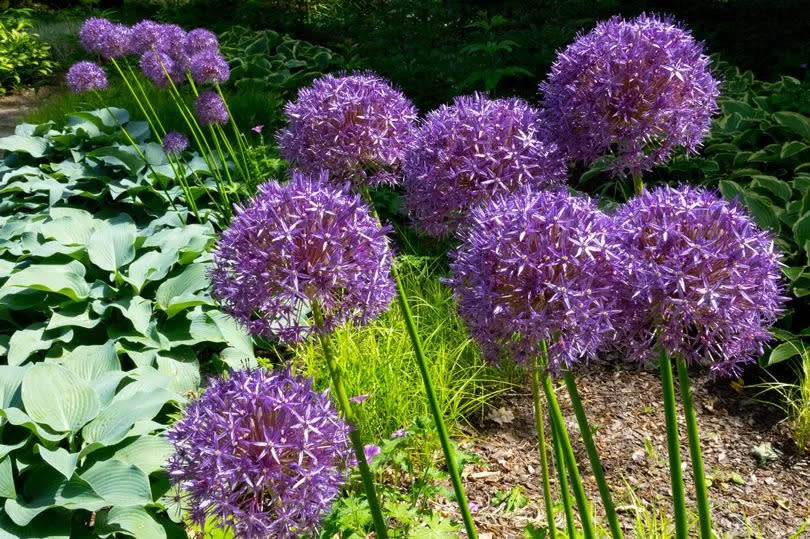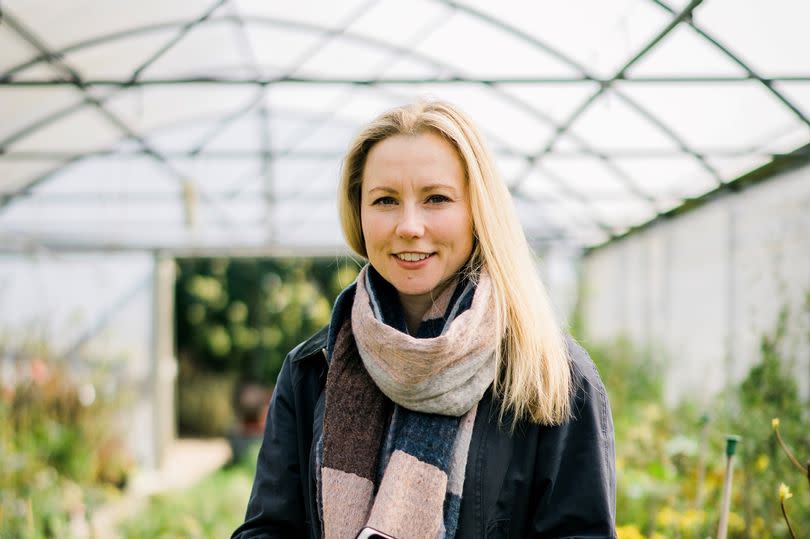Five ways to make your garden more joyful - from colour to furniture and plants

Gardening enthusiasts looking to inject more joy into their green spaces can take a leaf out of Penelope Walker's book, as she prepares her debut show garden at the RHS Chelsea Flower Show. Dubbed The Panathlon Joy Garden, it's a celebration of happiness through plants, landscaping, and design.
Walker is on a mission to translate the dopamine decor trend from interiors to gardens, advocating for an environment that bursts with colours and elements that spark joy.
She shares her philosophy on what joy means in a garden setting: "When we think about the word joy, it's not necessarily loud, it's more kind of quiet and uplifting, which makes you feel happy."
Read more: Alan Titchmarsh explains 'must do' gardening step to avoid 'very few flowers' this summer

For those aiming to cultivate a more joyful garden, Walker offers some advice:.
Embrace the natural world
"The most important thing is keeping it quite organic," Walker explains. In her show garden, visitors will find a meandering path with nary a straight line in sight.
"Even the terrain is all mounded, and we've some really unusual trees."
Walker advises ditching rigid geometry in favour of a more organic approach.
Add a touch of whimsy
Incorporating playful and quirky features can also elevate a garden's joy quotient, according to Walker. She encourages gardeners to think outside the box and find creative ways to weave in unique design elements that resonate personally.
"For instance, the plane trees (in the show garden) have got beautiful, unusual curved stems, the rear boundary has traditionally panelling but then we've created these 3D panels which kind of wave backwards and forwards but also up and down and they interact with one another. It's quirky and is meant to give a feeling of being uplifted."
Playfulness can extend to furniture, she hints, "It might be anything that is a bit tactile or something surprising."
When it comes to hues, "Don't be afraid to use colour. You can use quite vibrant colours if you want to. I don't generally use harsh primary colours (like bright yellows or reds) but think about pastel shades which can soften it down. You can use lots of colours, it's about keeping it harmonious in terms of how those colours blend into each other."
She suggests using white, a light and reflective hue, as a way to introduce illumination or provide a positive ambience with an uplifting feel to your garden.
If your attention is directed towards containers, aim to maintain uniformity in style and shade so it doesn't conflict visually.
"Just like you wouldn't paint your living room wall four diverse hues and then introduce a fifth hue onto your dining room table, think about utilising those tips outside, similar to ones used inside for that consistency."
Emphasise abundance
"This involves lots of planting and try to create more abundance by increasing the square meterage of the area within the garden, which might come back to having mounded terrain."
"If you have a budget to buy, say, 50 or 100 plants, it will be much better to buy fewer varieties but more of the same plant so the colours give a much stronger impact because there's a bigger group of them," she advises.
"Mounded terrain doesn't need to be big bold lumps of earth, you can mound your terrain up 2ft or so, which brings the plants much closer to eye level, which is going to make you feel surrounded by nature and surrounded by planting," she says.
Consider repeat planting
Don't necessarily think in terms of block planting, but larger groups of planting will create more of a visual impact. Repetitive planting repeating particular groups of plants throughout the garden will create a cohesive whole and a good use of colour, she suggests.
Don't be afraid of using bright pops of colour to stand out among the crowd and make you smile.
"If we are taking in a lot of information visually, it's really confusing for our brain and it can feel busy and tiring the opposite of joyful."
"In having repetition, you are quite literally reducing the stimulus that your brain has to take in at one point, which means you naturally feel calmer and the whole scheme feels more harmonious and more balanced."
She suggests that if you're seeking serenity in your garden, then consider repetitive planting of plants with larger leaves, such as hostas. Do not forget to entertain the thought of lollipop-flowered alliums for a fun twist.
Demonstrate Your Character
What sparks joy, for example, bright hues and vitality, may not be everyone's cup of tea. Therefore, don't hesitate to sidestep the conventional guidelines, advises our expert.
"But it's not just about promoting a sense of calm, it's about promoting that unexpected smile which will help you nail that joyful feeling."

 Yahoo News
Yahoo News 
